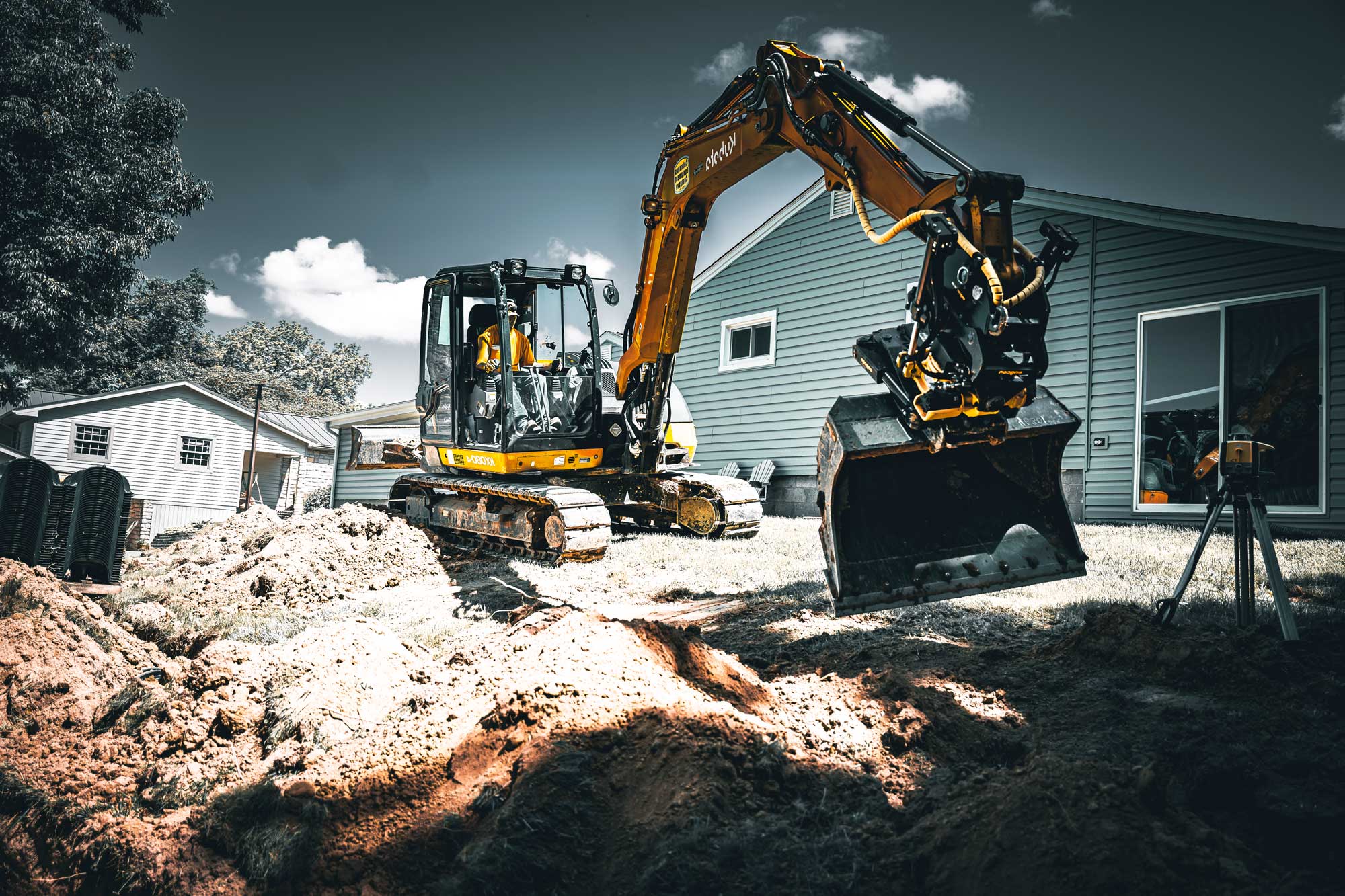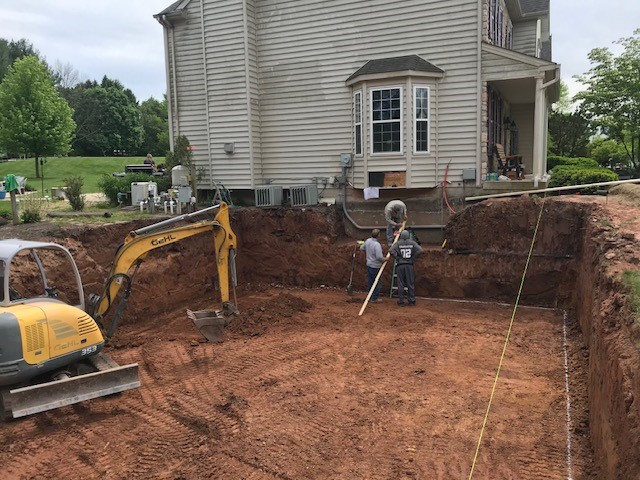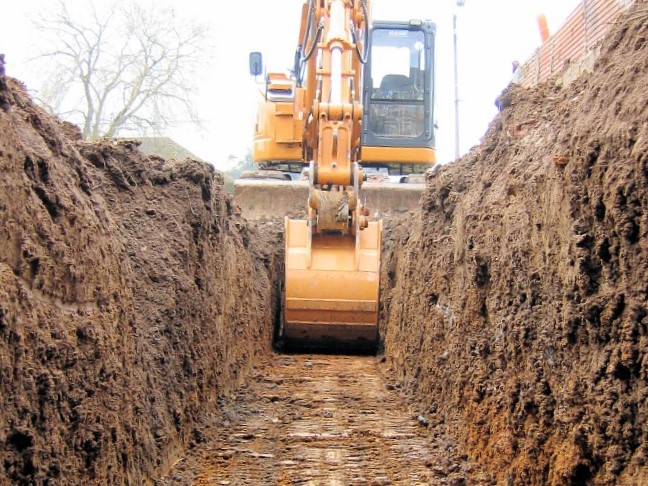Inexpensive Lancaster Excavation - Quality Excavation at Competitive Costs
Inexpensive Lancaster Excavation - Quality Excavation at Competitive Costs
Blog Article
Unveiling the Art of Excavation: Pro Tips for Safe and Productive Excavating
In the world of excavation, the mastery of secure and efficient digging is an art kind that requires accuracy, adherence, and knowledge to well established methods. As dirt is transformed and planet is relocated, the ins and outs of excavation expose themselves, demanding a keen understanding of devices, soil make-up, safety procedures, and ecological considerations. The competence required to browse these aspects efficiently can imply the difference in between a successful excavation project and a potential disaster. By unraveling the layers of this detailed process, a globe of understandings and approaches awaits those looking for to boost their excavation skills to new elevations.
Relevance of Proper Devices
To make certain the safety and security and efficiency of any type of excavation project, making use of the proper tools is vital. The right tools not just enhance performance however also mitigate dangers connected with digging. Excavation jobs vary in extent and complexity, ranging from little residential landscaping jobs to large building tasks. No matter the job dimension, having the correct equipment can make a substantial distinction in the outcome.
Excavators are essential items of machinery in any type of digging operation. These flexible equipments can be found in various dimensions to suit various project requirements. Tiny excavators are suitable for smaller jobs, while larger excavators tackle more substantial projects successfully. Backhoes are another important tools kind, combining the features of a loader and an excavator in one equipment. They are valuable for jobs calling for adaptability and ability to move.
Aside from excavators, various other vital devices includes dump bulldozers, trucks, and trenchers. Dump trucks are vital for getting rid of and transferring excavated materials, while trenchers are made use of for excavating slim and deep trenches. Excavators stand out in tasks that call for pushing large quantities of dirt or particles. By buying the proper equipment, excavation tasks can be completed safely, on time, and with accuracy.
Recognizing Dirt Make-up
A comprehensive understanding of soil make-up is fundamental for carrying out excavation tasks with precision and security. Comprehending the different kinds of dirt is important as it directly affects excavation approaches, equipment choice, and total job efficiency. Dirt structure usually contains four main parts: sand, silt, clay, and raw material. Each part has special residential or commercial properties that influence exactly how dirt responds to excavation processes.
Silt fragments are smaller than sand however bigger than clay, providing moderate drainage and communication. Organic issue, such as decaying plant material, impacts dirt fertility and security.
Prior to commencing excavation, conducting dirt tests to determine its structure and qualities is necessary. This information assists in choosing the proper equipment, executing precaution, and developing excavation strategies tailored to the specific soil problems - septic ohio. By understanding soil composition, excavation professionals can boost task results while making sure safety and security and adherence to best practices
Safety And Security Procedures and Procedures
Comprehending soil composition is the cornerstone upon which safety and security measures and procedures for excavation projects are built, making sure the well-being of workers and the success of the venture. There are numerous crucial steps that should be executed to reduce threats and protect against mishaps. when it comes to safety throughout excavation.
Firstly, before any type of digging starts, a complete evaluation of the website should be carried out to recognize any potential threats such as below ground utilities, unstable dirt conditions, or nearby frameworks that can position a threat. It is critical to have a proficient individual manage the excavation procedure to make sure that all safety procedures are adhered to strictly.
Additionally, all employees involved in the excavation has to be correctly educated in safe excavating methods and the proper procedure of tools. By adhering to these safety and security actions and methods, excavation projects can be finished efficiently and without event.
Effective Excavation Preparation
When beginning on an excavation task, thorough planning is necessary to ensure performance, security, and successful this post outcomes. Effective excavation planning entails several crucial steps that are essential for the smooth execution of the task.
As soon as the website analysis is complete, the following step is to develop a clear timeline and timetable for the excavation activities. This includes figuring out the series of tasks, devices demands, and manpower allotment. Correct scheduling helps avoid hold-ups and guarantees that the project remains on track.

Additionally, interaction among all employee is paramount throughout the planning phase. Clear regulations, routine updates, and effective control are necessary for an effective excavation job. By spending time and initiative in thorough planning, excavation groups can considerably improve productivity, lessen dangers, and accomplish effective end results.

Handling Environmental Considerations
With raising emphasis on environmental sustainability in building methods, handling ecological factors to consider has become an essential facet of excavation jobs. Excavation tasks have the prospective to influence the surrounding atmosphere through soil erosion, sediment runoff, environment disruption, and contamination of water sources. To minimize these threats, it is important to carry out ideal techniques that focus on environmental management.

In addition, correct waste monitoring is vital to stop dirt and water contamination. Carrying out treatments for the disposal of dangerous materials, recycling of waste materials, and lessening using hazardous chemicals can significantly reduce the ecological impact of excavation tasks. By incorporating these techniques right into excavation preparation and implementation, building business can guarantee that their projects are not just secure and efficient yet also environmentally responsible.
Final Thought
To conclude, mastering the art of excavation needs a complete understanding of appropriate devices, soil composition, precaution, and effective preparation. By following these guidelines and considering ecological elements, excavations can be carried out securely and effectively. Home Page It is essential to focus on safety and security and productivity in every digging task to ensure effective outcomes.
As soil is transformed and planet is moved, the details of excavation expose themselves, requiring a keen understanding of equipment, soil structure, safety and security procedures, and ecological factors to consider.To ensure the security and efficiency of any type of view it excavation task, making use of the proper tools is paramount.A thorough understanding of soil structure is fundamental for performing excavation projects with accuracy and safety and security. Recognizing the various types of soil is crucial as it directly affects excavation techniques, equipment selection, and general project performance. By recognizing dirt make-up, excavation professionals can boost job outcomes while guaranteeing security and adherence to finest methods.
Report this page